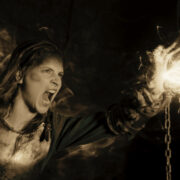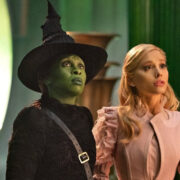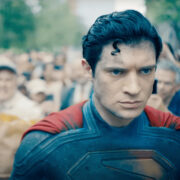BLEEDING LOVE: Road Trip To Recovery
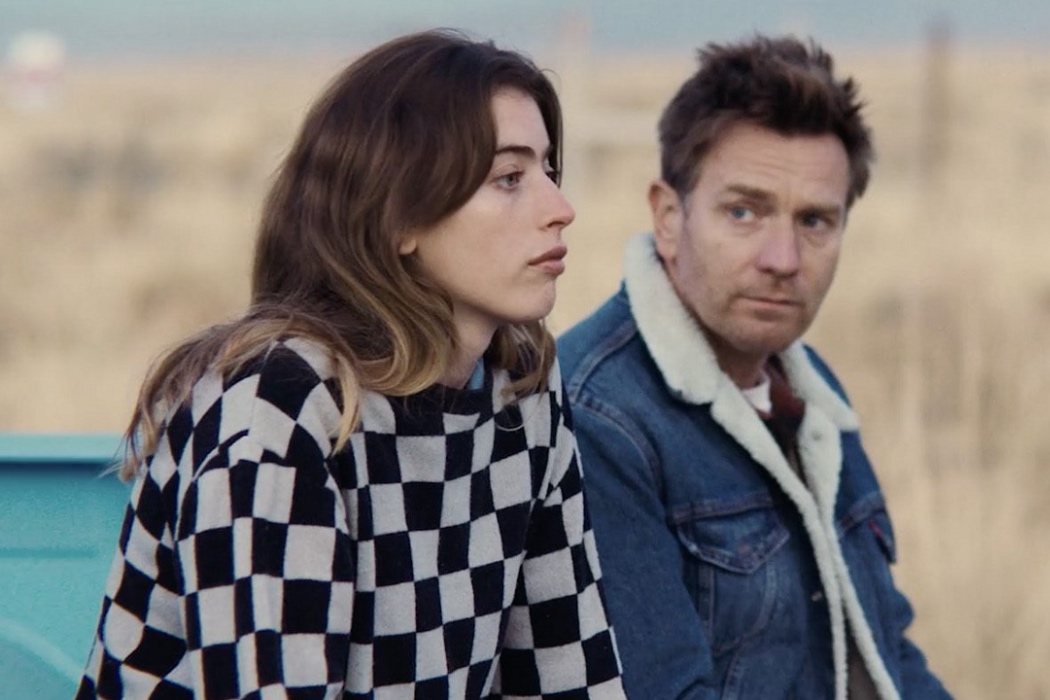
Stephanie Archer is 39 year old film fanatic living in…
The relationship between parent and child continually paints a need for artistic exploration and understanding. For Emma Westenberg‘s Bleeding Love, the examination of the father-daughter relationship is cued into focus. Proposed as an estranged father and daughter embarking on a road trip, various strangers and situations straining their already fractured relationship, Bleeding Love feels as though it has a lot packed into its core. Compounding the premise is its leading cast in real-life father and daughter in Ewan McGregor and his daughter Clara McGregor, both working to capture not only the fractured fabric between their characters but also the constant struggles that not only separate but unite.
Bleeding Love
The music at the beginning of Bleeding Love is punk-fueled, the film capturing a sense of rebellion, both in sound and visuals. Early on, there is a sense of a carefree attitude, and the daughter never appears to take anything too seriously. In these early moments, a punk rebellion in the carefree nature of youth is crafted – though just as quickly contrasted by the father, who introduces a sense of urgency as he runs after his daughter in the middle of nowhere.
One of the strongest elements of Bleeding Love is the eternal sense of youth and naivety, not only in denial but in the visual representations the film utilizes. These moments may be brief, but poignant when utilized giving a deeper complexity to the daughter. Lollipops, candy, and a blue-tinted mouth and lips capture early on the concept that she is still a child. As the film grows these moments, Bleeding Love works in her estranged relationship with her father, the reasons for being there, and the growth she must embark on in order to reach the dawn.
While the film works strongly on a focused view of the fractured relationship, it is unafraid to remind viewers of the intimacy of her journey. The camera holds tight on her features, extreme close-ups capturing each flint of the eye, each smirk of the mouth and each moment of emotion – whether fear or joy – that crosses her face. She is a child still waiting for her father to return to her, his presence missing in each of these intimate moments, the audience becoming an unknown surrogate to her inner workings. It is a clever technique to drive a deeper connection with the audience, isolating the loneliness of the daughter.
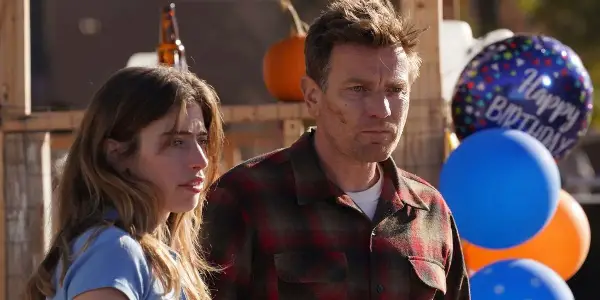
As intimate as the camera is with the daughter, there is also an uneasiness shared between both of them, Bleeding Love working on context clues, quips of dialogue and brief drawbacks to paint the picture of the relationship they share. From awkward jokes to failed attempts to connect, there a push and pull struggle to find a common ground between them.
Ewan McGregor harnesses his role with ease, capturing both the sense of urgency and guilt his character constantly carries. While seen more than spoken, especially early on, it is his eyes that speak volumes, welcoming empathy and understanding from the audience as each revelation comes to pass. Clara McGregor completely inhabits the role of daughter, embracing both the bright and dark corners of her role. She is aware of the heart of her character, as well as the uncontrollable urge to harness the next high. And while the real life father and daughter relationship of the McGregor‘s adds to the chemistry, there is a deep well of commitment between them that extends beyond themselves to create a beautiful portrait of love, pain and hope.
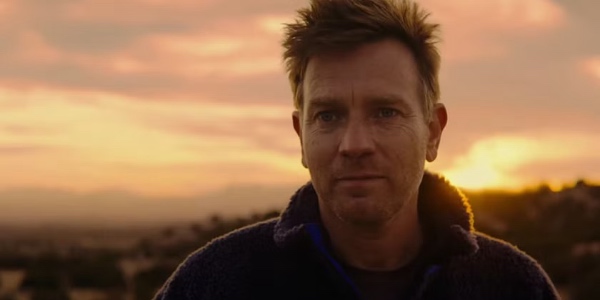
Bleeding Love is not afraid to push the boundaries of possibilities. As father and daughter make their way through the desert to Santa Fe, they come across an unlikely band of characters, each adding to the journey. And while these moments give the film an extra layer of emotional breadth, these unlikely events, at times, take away from the film’s authenticity and fracture the growing audience investment. Further driving fractures with its audience is Bleeding Love‘s occasional harsh editing style. For a film involving addiction, at times, it feels like a brilliant artistic representation, others as though moments have been cut short, feeling abrupt and disconnected. These style choices carry over to the films’ on-and-off-again use of handheld shots, again at times feeling artistically representational while other times out of place.
Conclusion:
The investment of Bleeding Love sneaks up on you delivering a deeply cathartic conclusion. This is not a film, though, that finds its release in the final moments of its conclusion. Instead is a film that is about the journey, its final moments taking a breath of completed exploration and discovery. A film that leaves viewers with a sense of hope and release, Bleeding Love works to examine the ties that bind and the pain one must face to overcome.
Bleeding Love was released in theaters and on VOD on February 16, 2024!
Does content like this matter to you?
Become a Member and support film journalism. Unlock access to all of Film Inquiry`s great articles. Join a community of like-minded readers who are passionate about cinema - get access to our private members Network, give back to independent filmmakers, and more.






